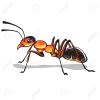- Formiculture.com
- Forums
- Gallery
- Members
- Member Map
- Chat

Orange ant southern maine
Started By
Diesel
, Sep 5 2017 1:31 PM
4 replies to this topic
#1
 Offline
-
Posted September 5 2017 - 1:31 PM
Offline
-
Posted September 5 2017 - 1:31 PM
I'm finding these orange brown colored ants during a nuptial flight of another ant. I call them sugar ants. These orange one look like wingless wasps.help as I'm collecting for my next colony
Ant Species kept
Temnothorax Longispinosus.-Journal(discontinued)-(formerly)
Camponotus Noveboracensis (formerly)
Camponotus Nearticus-formerly
Tetramorium sp.-formerly
Camponotus Pennsylvanicus Queen & brood.-formerly
Tapinoma Sessile-Journal (3 queen colony)-formerly
Tapinoma Sessile #2 (2 queen colony)-formerly
Aphaenogaster Picea-Journal-active
Crematogaster sp.(Cerasi or Lineolata) Queen with 3 workers and brood-formerly
Crematogaster sp. #2 (Cerasi or Lineolata) Queen with brood-formerly
Formica sp. polygenus-active 300+ workers-active
Formica Subsericea-active 25+ workers-active
Myrmica Rubra 400+ workers 3 queens-active
#2
 Offline
-
Posted September 5 2017 - 1:46 PM
Offline
-
Posted September 5 2017 - 1:46 PM

Ant Species kept
Temnothorax Longispinosus.-Journal(discontinued)-(formerly)
Camponotus Noveboracensis (formerly)
Camponotus Nearticus-formerly
Tetramorium sp.-formerly
Camponotus Pennsylvanicus Queen & brood.-formerly
Tapinoma Sessile-Journal (3 queen colony)-formerly
Tapinoma Sessile #2 (2 queen colony)-formerly
Aphaenogaster Picea-Journal-active
Crematogaster sp.(Cerasi or Lineolata) Queen with 3 workers and brood-formerly
Crematogaster sp. #2 (Cerasi or Lineolata) Queen with brood-formerly
Formica sp. polygenus-active 300+ workers-active
Formica Subsericea-active 25+ workers-active
Myrmica Rubra 400+ workers 3 queens-active
#3
 Offline
-
Posted September 5 2017 - 1:55 PM
Offline
-
Posted September 5 2017 - 1:55 PM
#4
 Offline
-
Posted September 5 2017 - 2:31 PM
Offline
-
Posted September 5 2017 - 2:31 PM
Looks like it to me.
- Martialis and T.C. like this
#5
 Offline
-
Posted September 5 2017 - 3:10 PM
Offline
-
Posted September 5 2017 - 3:10 PM
That's them. Ty for the imput.looks like I will have to let them go. Social parasites so I would need a worker force to raise the eggs
That's them. Ty for the imput.looks like I will have to let them go. Social parasites so I would need a worker force to raise the eggs
That's them. Ty for the imput.looks like I will have to let them go. Social parasites so I would need a worker force to raise the eggs
Ant Species kept
Temnothorax Longispinosus.-Journal(discontinued)-(formerly)
Camponotus Noveboracensis (formerly)
Camponotus Nearticus-formerly
Tetramorium sp.-formerly
Camponotus Pennsylvanicus Queen & brood.-formerly
Tapinoma Sessile-Journal (3 queen colony)-formerly
Tapinoma Sessile #2 (2 queen colony)-formerly
Aphaenogaster Picea-Journal-active
Crematogaster sp.(Cerasi or Lineolata) Queen with 3 workers and brood-formerly
Crematogaster sp. #2 (Cerasi or Lineolata) Queen with brood-formerly
Formica sp. polygenus-active 300+ workers-active
Formica Subsericea-active 25+ workers-active
Myrmica Rubra 400+ workers 3 queens-active
0 user(s) are reading this topic
0 members, 0 guests, 0 anonymous users















